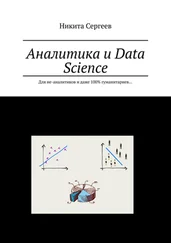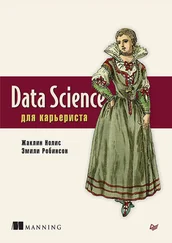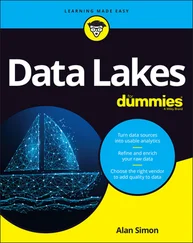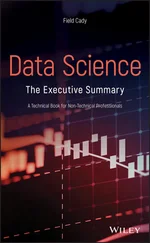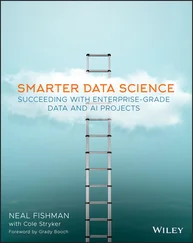 Real-time, stream-processing frameworks are quite useful in a multitude of industries — from stock and financial market analyses to e-commerce optimizations and from real-time fraud detection to optimized order logistics. Regardless of the industry in which you work, if your business is impacted by real-time data streams that are generated by humans, machines, or sensors, a real-time processing framework would be helpful to you in optimizing and generating value for your organization.
Real-time, stream-processing frameworks are quite useful in a multitude of industries — from stock and financial market analyses to e-commerce optimizations and from real-time fraud detection to optimized order logistics. Regardless of the industry in which you work, if your business is impacted by real-time data streams that are generated by humans, machines, or sensors, a real-time processing framework would be helpful to you in optimizing and generating value for your organization.
Part 2
Using Data Science to Extract Meaning from Your Data
IN THIS PART …
Master the basics behind machine learning approaches.
Explore the importance of math and statistics for data science.
Work with clustering and instance-based learning algorithms.
Chapter 3
Machine Learning Means … Using a Machine to Learn from Data
IN THIS CHAPTER
 Grasping the machine learning process
Grasping the machine learning process
 Exploring machine learning styles and algorithms
Exploring machine learning styles and algorithms
 Overviewing algorithms, deep learning, and Apache Spark
Overviewing algorithms, deep learning, and Apache Spark
If you’ve been watching any news for the past decade, you’ve no doubt heard of a concept called machine learning — often referenced when reporters are covering stories on the newest amazing invention from artificial intelligence. In this chapter, you dip your toes into the area called machine learning, and in Part 3you see how machine learning and data science are used to increase business profits.
Defining Machine Learning and Its Processes
Machine learning is the practice of applying algorithmic models to data over and over again so that your computer discovers hidden patterns or trends that you can use to make predictions. It’s also called algorithmic learning. Machine learning has a vast and ever-expanding assortment of use cases, including
Real-time Internet advertising
Internet marketing personalization
Internet search
Spam filtering
Recommendation engines
Natural language processing and sentiment analysis
Automatic facial recognition
Customer churn prediction
Credit score modeling
Survival analysis for mechanical equipment
Walking through the steps of the machine learning process
Three main steps are involved in machine learning: setup, learning, and application. Setup involves acquiring data, preprocessing it, selecting the most appropriate variables for the task at hand (called feature selection ), and breaking the data into training and test datasets. You use the training data to train the model, and the test data to test the accuracy of the model’s predictions. The learning step involves model experimentation, training, building, and testing. The application step involves model deployment and prediction.
 Here’s a rule of thumb for breaking data into test-and-training sets: Apply random sampling to two-thirds of the original dataset in order to use that sample to train the model. Use the remaining one-third of the data as test data, for evaluating the model’s predictions.
Here’s a rule of thumb for breaking data into test-and-training sets: Apply random sampling to two-thirds of the original dataset in order to use that sample to train the model. Use the remaining one-third of the data as test data, for evaluating the model’s predictions.
 A random sample contains observations that all each have an equal probability of being selected from the original dataset. A simple example of a random sample is illustrated by Figure 3-1 below. You need your sample to be randomly chosen so that it represents the full data set in an unbiased way. Random sampling allows you to test and train an output model without selection bias.
A random sample contains observations that all each have an equal probability of being selected from the original dataset. A simple example of a random sample is illustrated by Figure 3-1 below. You need your sample to be randomly chosen so that it represents the full data set in an unbiased way. Random sampling allows you to test and train an output model without selection bias.

FIGURE 3-1:A example of a simple random sample
Becoming familiar with machine learning terms
Before diving too deeply into a discussion of machine learning methods, you need to know about the (sometimes confusing) vocabulary associated with the field. Because machine learning is an offshoot of both traditional statistics and computer science, it has adopted terms from both fields and added a few of its own. Here is what you need to know:
Instance: The same as a row (in a data table), an observation (in statistics), and a data point . Machine learning practitioners are also known to call an instance a case .
Feature: The same as a column or field (in a data table) and a variable (in statistics). In regression methods, a feature is also called an independent variable (IV).
Target variable: The same as a predictant or dependent variable (DV) in statistics.
 In machine learning, feature selection is a somewhat straightforward process for selecting appropriate variables; for feature engineering, you need substantial domain expertise and strong data science skills to manually design input variables from the underlying dataset. You use feature engineering in cases where your model needs a better representation of the problem being solved than is available in the raw dataset.
In machine learning, feature selection is a somewhat straightforward process for selecting appropriate variables; for feature engineering, you need substantial domain expertise and strong data science skills to manually design input variables from the underlying dataset. You use feature engineering in cases where your model needs a better representation of the problem being solved than is available in the raw dataset.
 Although machine learning is often referred to in context of data science and artificial intelligence, these terms are all separate and distinct. Machine learning is a practice within data science, but there is more to data science than just machine learning — as you will learn throughout this book. Artificial intelligence often, but not always, involves data science and machine learning. Artificial intelligence is a term that describes autonomously acting agents. In some case AI agents are robots, in others they are software applications. If the agent’s actions are triggered by outputs from an embedded machine learning model, then the AI is powered by data science and machine learning. On the other hand, if the AI’s actions are governed by a rules-based decision mechanism, then you can have AI that doesn’t actually involve machine learning or data science at all.
Although machine learning is often referred to in context of data science and artificial intelligence, these terms are all separate and distinct. Machine learning is a practice within data science, but there is more to data science than just machine learning — as you will learn throughout this book. Artificial intelligence often, but not always, involves data science and machine learning. Artificial intelligence is a term that describes autonomously acting agents. In some case AI agents are robots, in others they are software applications. If the agent’s actions are triggered by outputs from an embedded machine learning model, then the AI is powered by data science and machine learning. On the other hand, if the AI’s actions are governed by a rules-based decision mechanism, then you can have AI that doesn’t actually involve machine learning or data science at all.
Considering Learning Styles
Machine learning can be applied in three main styles: supervised, unsupervised, and semisupervised. Supervised and unsupervised methods are behind most modern machine learning applications, and semisupervised learning is an up-and-coming star.
Learning with supervised algorithms
Supervised learning algorithms require that input data has labeled features. These algorithms learn from known features of that data to produce an output model that successfully predicts labels for new incoming, unlabeled data points. You use supervised learning when you have a labeled dataset composed of historical values that are good predictors of future events. Use cases include survival analysis and fraud detection, among others. Logistic regression is a type of supervised learning algorithm, and you can read more on that topic in the next section.
Читать дальше
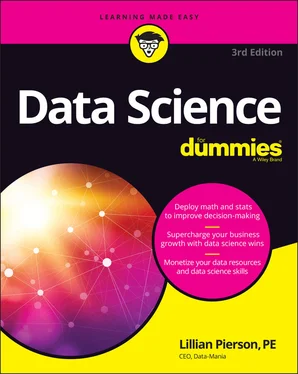
 Real-time, stream-processing frameworks are quite useful in a multitude of industries — from stock and financial market analyses to e-commerce optimizations and from real-time fraud detection to optimized order logistics. Regardless of the industry in which you work, if your business is impacted by real-time data streams that are generated by humans, machines, or sensors, a real-time processing framework would be helpful to you in optimizing and generating value for your organization.
Real-time, stream-processing frameworks are quite useful in a multitude of industries — from stock and financial market analyses to e-commerce optimizations and from real-time fraud detection to optimized order logistics. Regardless of the industry in which you work, if your business is impacted by real-time data streams that are generated by humans, machines, or sensors, a real-time processing framework would be helpful to you in optimizing and generating value for your organization. Grasping the machine learning process
Grasping the machine learning process Here’s a rule of thumb for breaking data into test-and-training sets: Apply random sampling to two-thirds of the original dataset in order to use that sample to train the model. Use the remaining one-third of the data as test data, for evaluating the model’s predictions.
Here’s a rule of thumb for breaking data into test-and-training sets: Apply random sampling to two-thirds of the original dataset in order to use that sample to train the model. Use the remaining one-third of the data as test data, for evaluating the model’s predictions. A random sample contains observations that all each have an equal probability of being selected from the original dataset. A simple example of a random sample is illustrated by Figure 3-1 below. You need your sample to be randomly chosen so that it represents the full data set in an unbiased way. Random sampling allows you to test and train an output model without selection bias.
A random sample contains observations that all each have an equal probability of being selected from the original dataset. A simple example of a random sample is illustrated by Figure 3-1 below. You need your sample to be randomly chosen so that it represents the full data set in an unbiased way. Random sampling allows you to test and train an output model without selection bias.
 Although machine learning is often referred to in context of data science and artificial intelligence, these terms are all separate and distinct. Machine learning is a practice within data science, but there is more to data science than just machine learning — as you will learn throughout this book. Artificial intelligence often, but not always, involves data science and machine learning. Artificial intelligence is a term that describes autonomously acting agents. In some case AI agents are robots, in others they are software applications. If the agent’s actions are triggered by outputs from an embedded machine learning model, then the AI is powered by data science and machine learning. On the other hand, if the AI’s actions are governed by a rules-based decision mechanism, then you can have AI that doesn’t actually involve machine learning or data science at all.
Although machine learning is often referred to in context of data science and artificial intelligence, these terms are all separate and distinct. Machine learning is a practice within data science, but there is more to data science than just machine learning — as you will learn throughout this book. Artificial intelligence often, but not always, involves data science and machine learning. Artificial intelligence is a term that describes autonomously acting agents. In some case AI agents are robots, in others they are software applications. If the agent’s actions are triggered by outputs from an embedded machine learning model, then the AI is powered by data science and machine learning. On the other hand, if the AI’s actions are governed by a rules-based decision mechanism, then you can have AI that doesn’t actually involve machine learning or data science at all.![Роман Зыков - Роман с Data Science. Как монетизировать большие данные [litres]](/books/438007/roman-zykov-roman-s-data-science-kak-monetizirova-thumb.webp)
